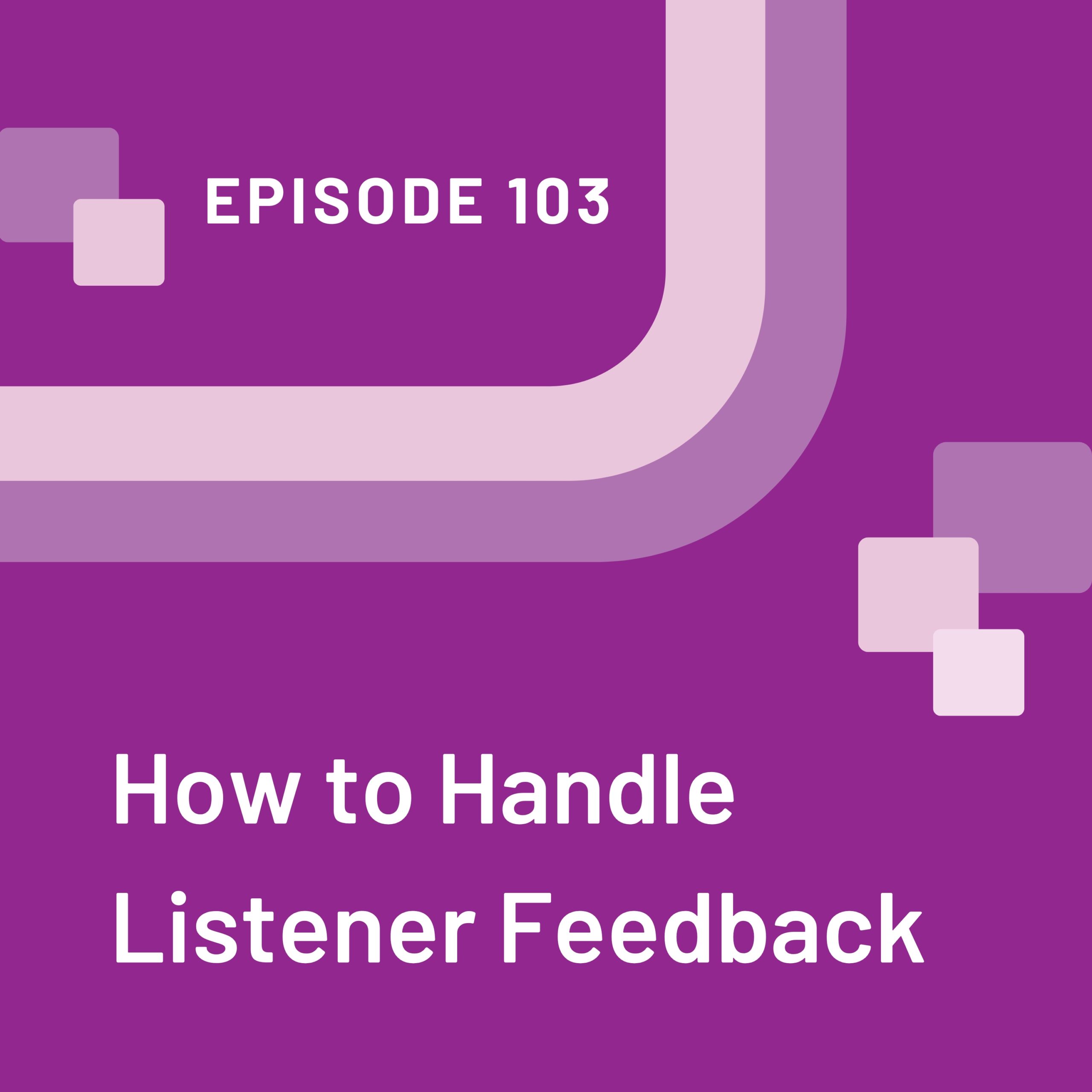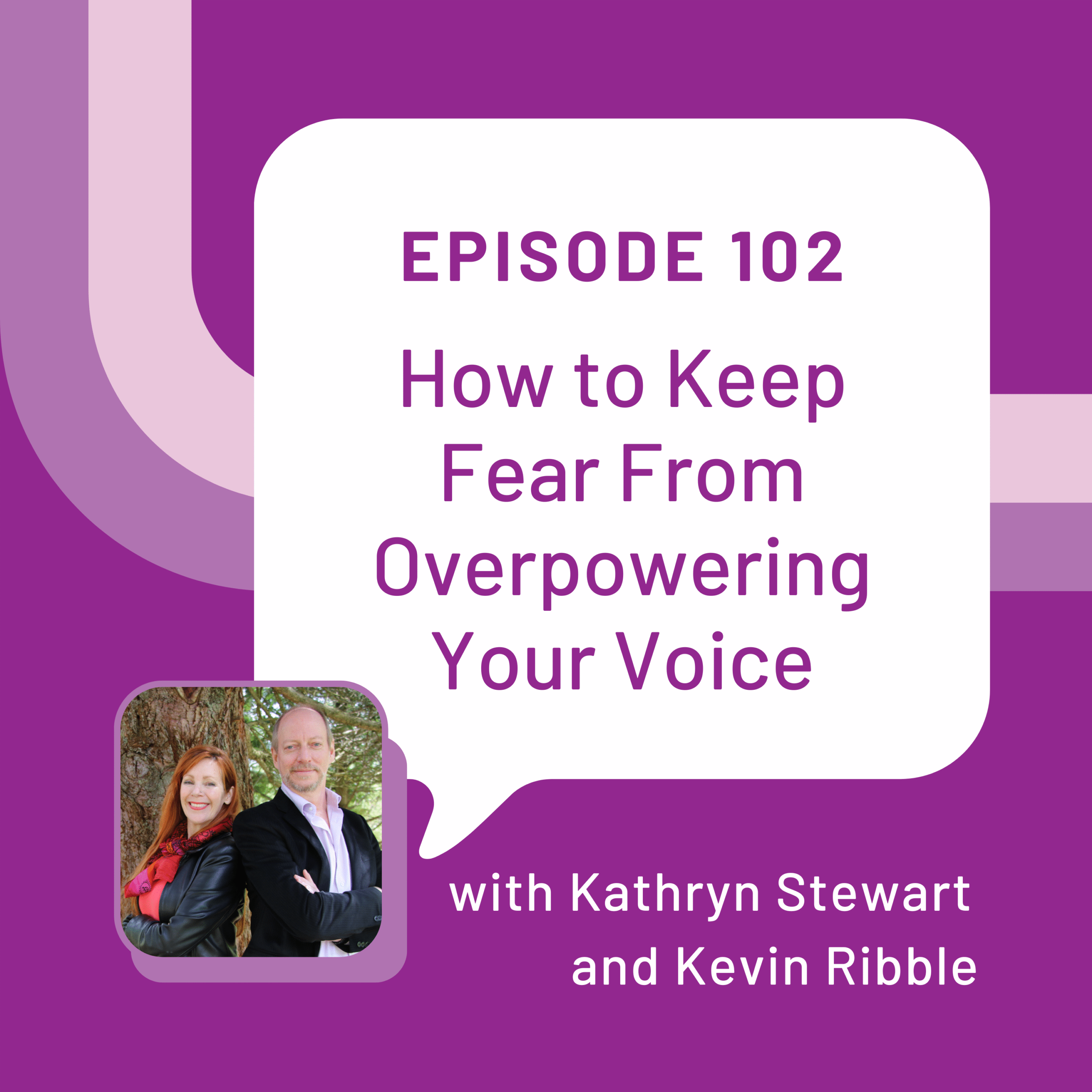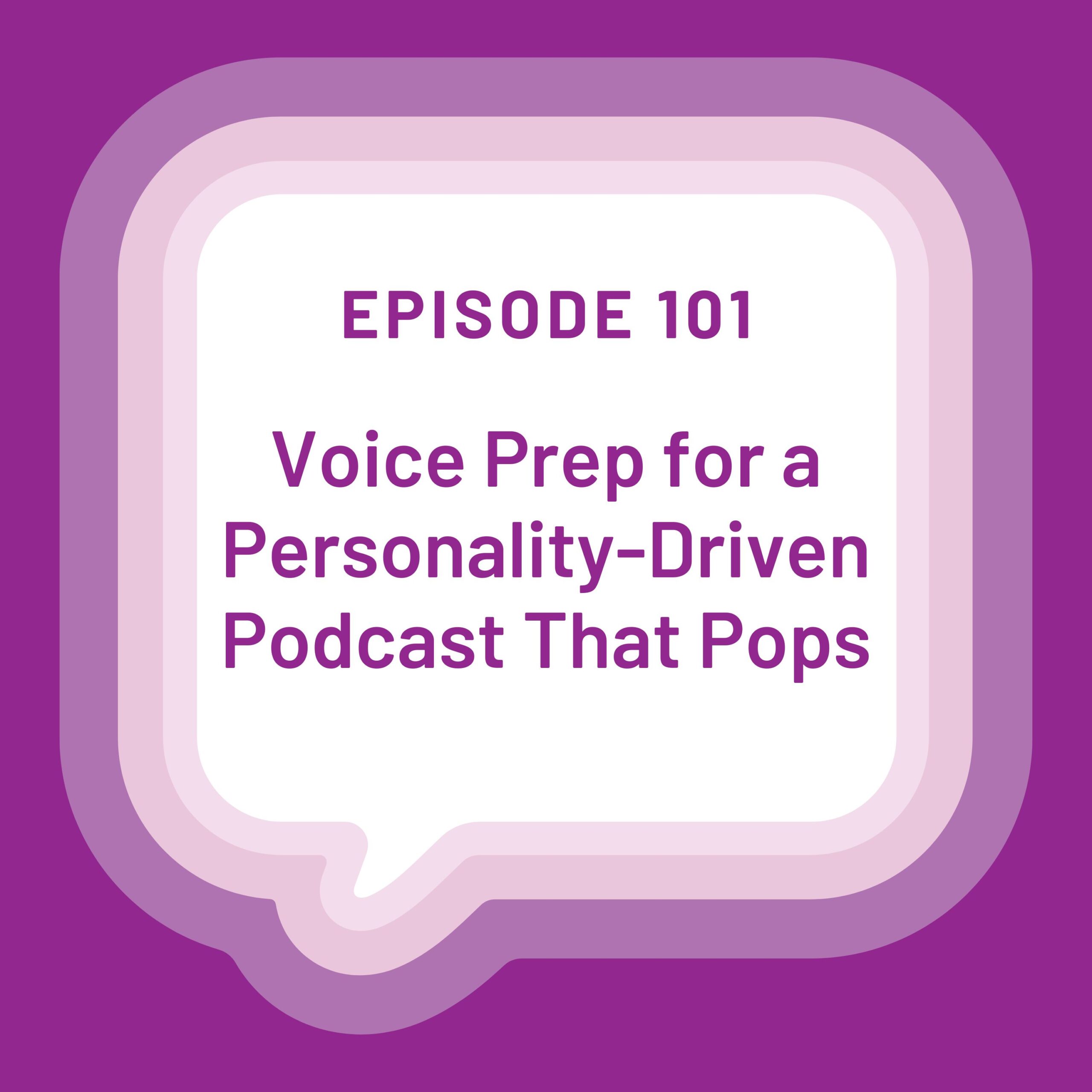[MUSIC IN – GHOSTHOOD FEATURING SARA AZRIEL “LET’S GO” BEGINS]
MARY: Podcasting as an industry is an audio only platform. That’s the way it started. And still today, the majority of its listeners still prefer audio first. But what is the industry doing to support listeners that may have hearing challenges? How can you adjust your podcast to include a wider audience? One of the first things people will think of is to use transcripts, and I think that is an excellent idea. However, not all transcripts are created equal. There are a few things that podcasters might not think of when they think of creating a transcript for their episodes. So for today’s episode, we’re gonna dive deeper into transcripts because the landscape for transcripts is changing for podcasts, and I think we’re moving in the right direction. So let’s dive deeper into how transcripts can ultimately help you as a podcaster and your listeners, too. This is episode number 78 of the Podcaster’s Guide To a Visible Voice.
<< WOMAN SINGS: So so so so let’s go >>
So welcome back to the show. Thanks for listening.
18% of all unique listeners landed on the podcast website via a transcript page. Over 4% of unique listeners because of a transcript. I mean 4%. Just think about how many listeners you have. Now increase that by 4%. Don’t you want that? But like I said, accurate transcripts are the way to go, because if someone is typing in some jargon or certain words that you use in your industry, spelling a name, it all has to be searchable. If it’s spelled wrong, it’s never going to come up in your SEO.
So if you’re just going to do the AI, plunk the transcript that’s automatically generated onto your website, I mean, yeah, it could still work, but it won’t have the same effectiveness. Having it spelled correctly is key, and that takes time. That is human effort because names are commonly misspelled all the time. I mean, just think about like, my last guest, Erin Moon. Moon, sure, last name, easy to spell. But Erin could be the male form, A A R O N. She spells it E R I N. I once knew an Aaran. That’s like A A R A N. That’s the way she spelled it. So spelling is key to create your own accurate transcripts. It’s not just about the spelling.
We’re also talking about speed and cost within your budget and the ability to edit. So we’re talking about time here. All of those elements goes into creating a transcript. Will you be doing it yourself, or will you be handing that off to someone else to do? Maybe someone within your own team or someone like us at organize sound productions. We can create those transcripts for you when we edit the show and put all your pieces together. How much time and how much budget do you have to create these transcripts? And when you are creating Your transcripts, you want to go further. If you have the bandwidth and the resources, you want to make sure part of your transcript is that accuracy piece. Right?
So you want to develop your own format. Think about use cases from screen readers to comprehension, formatting plays the part, and I’m still learning lots about this as there isn’t a one standard for the podcasting industry. And so when searching, there are different formats based on platforms such as transcription for videos, also known as captions. They format things differently. So I don’t think there is a one size fits all for podcasting right now. But here are some things that we do that I think could be helpful for creating your own formatting. Use speaker names. So what we like to do is have their name and usually just their first name, because we introduce who the person is with their full name in the beginning. So when you have the different, um, speakers come in, you can just have their first name and then a colon. I like to add that instead of just having like, Speaker One, Speaker Two, as a person who is reading through the transcript, who is that again? Like, who was Speaker One again? Was that the host? Or have you labeled speaker one the guest? I don’t know. So using their first name is great, and it really identifies each person.
Audio descriptions is something that people might not think about. This is usually something that’s missed in a transcript. For a listener to really understand the context and to be with you in that interview or that episode, audio descriptions are really helpful. They help the reader understand what’s going on. So I equate this to on TV, how they have closed captioning or described video. Closed captioning is usually what is said on screen, but described video also includes the sound effects, what’s happening in the background, the music that’s playing, that really immerses you into what you’re reading. And in this case, the reading of the transcript for your podcast.
Is there a laugh? Because this can show sarcasm? Is there music or lyrics that play an important part of the story? Have you included sound effects? What are these pieces? It needs to be in the transcript for the audio descriptions. I like to add audio descriptions in square brackets, which denote additional information or context versus like regular brackets, you know, the round ones. Usually people use that for like, sidebars or little bits of information. But I find the square brackets are usually a common place to add for audio descriptions and other notes for the transcript.
Transcripts are also great, but not when they are just one large chunk of text. Apple podcasts actually does this well with their new transcripts. The formatting of the transcript, um, needs to be broken up so that when you follow along, like on Apple podcasts, they have it karaoke style. So like, the words get highlighted, it’s broken up so that these large chunks of text are easier to read. So I would recommend like, breaking it up into smaller thoughts or chunks to help with comprehension. It’s not about how many sentences should be in a paragraph, but what is this thought? And can we break it up so that it’s easier to read and grasp concepts?
And one of the great things for you as a creator of a podcast, transcripts can help you learn, whether it is compiling your own research, so that you can write a book or create presentations, develop trainings and talks. You can use this text form to grab sections of the audio and also repurpose them for quotes, not just for social media, but like, you can use those quotes within your website, your trainings, your presentations, and things like that. And especially if you have an interview, you can learn from those guests in a totally different form. You have their words on a page that you can scan through and highlight and distill for yourself. If you need to do more research, you need to do more learnings. Or you know what? This was a great nugget from them. My listener is going to learn so much from what they said here,
[MUSIC IN]
and then you can highlight that and share that with your listeners. So I can really get a lot deeper into transcripts, but I want to hear from you, what are your goals with transcripts? And if you include transcripts in your show already, how do you do that? What’s your process and what was your why on creating transcripts in the first place? Are they just AI, automatically generated, or are they accurate? I’d love to know, how has transcripts helped you as a podcaster? Or maybe as a listener as well? Do you use transcripts when you’re listening to other people’s shows? Let me know. You can drop a voicemail as usual on my website, visiblevoicepodcast.com. Look for the purple send voicemail button on the right hand side of your screen and you record that straight from your phone. Or also, an email is also lovely, right? We’re talking about transcripts, so the text is good too. Send me an email with your feedback at visiblevoicepodcast@gmail.com. And like I said earlier, if you need a transfer of this episode, it’s always going to be on my website. So you go to the episode page at visiblevoicepodcast.com and scroll down in the transcript will be right there at the bottom of your screen. So thank you so much for listening today and yeah, let me know what you think about transcripts in general. I can’t wait to hear from you.
[MUSIC ENDS]
On the next episode of the podcast, we’ll continue this theme on accessibility for podcasts. We’re going to talk to Joel McKinnon about all of this and also explore how the AI explosion can be a good or bad thing for podcasters and dive a little deeper into his own podcasting journey. This should be a good one because it’s going to expand a lot on what we just talked about today, so we’ll talk to you then.
[OUTRO MUSIC IN – SHOW CLOSE]
<< GHOSTHOOD FEATURING SARA AZRIEL “LET’S GO” BEGINS >>
MARY: Thank you so much for listening to the Podcaster’s Guide to a Visible Voice. If you enjoyed this episode, I’d love it if you shared it with a podcasting friend. And to reveal more voicing and podcasting tips, click on over to visiblevoicepodcast.com.
<< WOMAN SINGS: Let’s go >>
[MUSIC ENDS]



